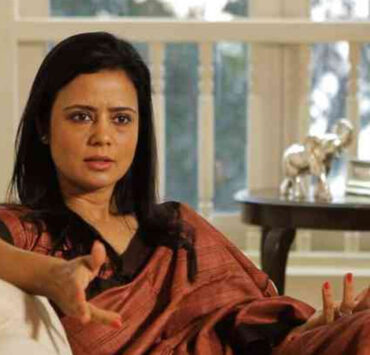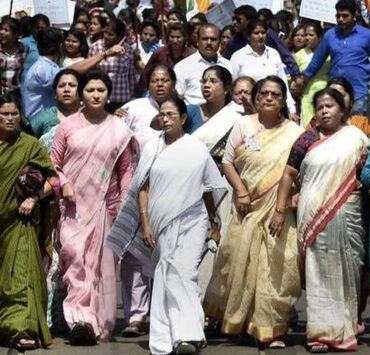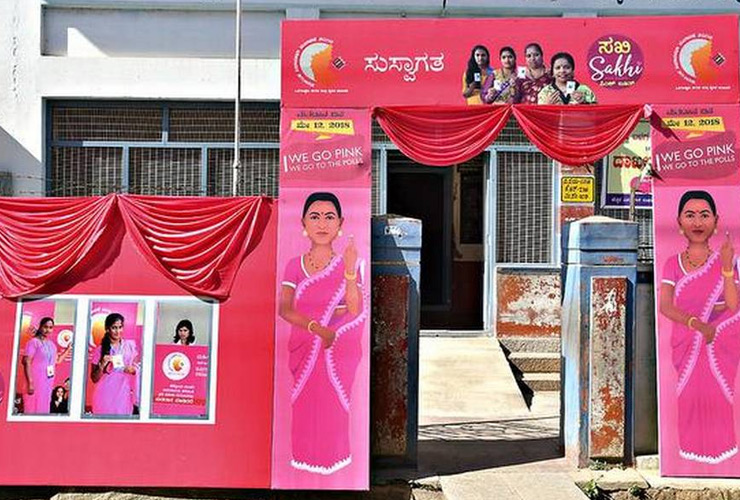
By Gita Aravamudan
I normally like pink. It’s a warm and cheery colour. But not when it is used for gender stereotyping. And these days that’s what it is most used for. By sneaky scan specialists, by the brazen commercial exploiters of women’s day and even by the Election Commission. In Karnataka, for instance, nearly 400 pink sakhi polling booths were set up exclusively for women.
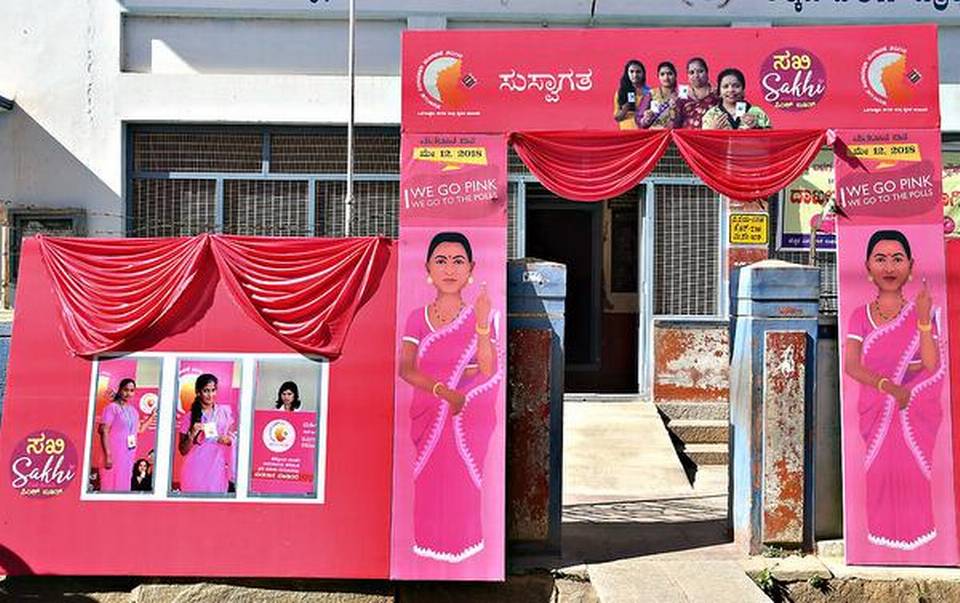
A special Sakhi, or Pink, booth in Mysuru during the Karnataka Assembly elections in 2018. Source: The Hindu
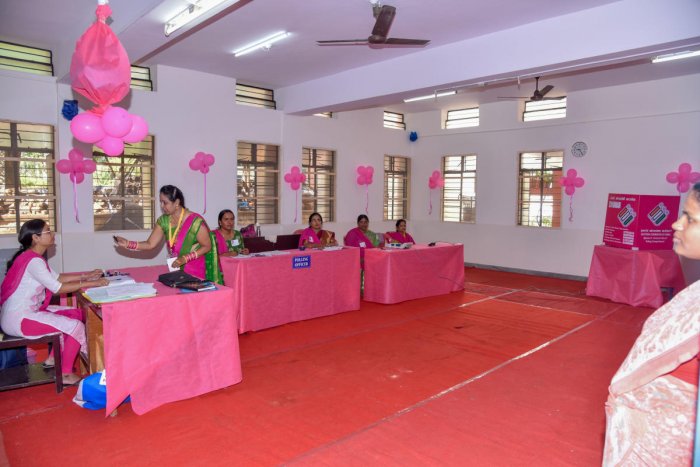
A returning officer issuing instructions to a polling staff member at a booth in Bengaluru during the 2018 Karnataka Assembly elections. DH photo/S K Dinesh Source: Deccan Herald
The polling booths had a real overdose of pink which actually turned off quite a few women. Not only were they decorated in pink both inside and outside, the polling officials were also instructed to wear pink saris and jewelry and to even paint their nails pink and wear pink bindis. In some booths the women on duty were given pink saris and blouse pieces but they declined to wear them as they were of poor quality. In spite of all this there was no significant increase in the number of women voters who turned up to cast their votes on Election Day.
Do women really need polling booths of their own? Perhaps they might in some areas where purdah is the norm. But, even there, do the polling booths have to be pink? Does the colour signify anything special to women? After all the idea of pink being a girl’s colour is a Western concept and most probably a woman from a remote tribal area who needs guidance on how to vote might not even recognise a pink booth as something meant exclusively for her
While I am all against stereotyping, I acknowledge that it provides a short cut to get a message across to a target audience. For example, in Hailakandi District in Assam, Keerthi Jalli, the first woman Deputy Commissioner, used stereotyping for getting women to the polling booth. And she succeeded. On polling day women voters far outnumbered men in the overall polling percentage in Hailakandi district. They recorded a highest ever 77.81 percent voter turnout in comparison to only 49.72 percent for male voters.
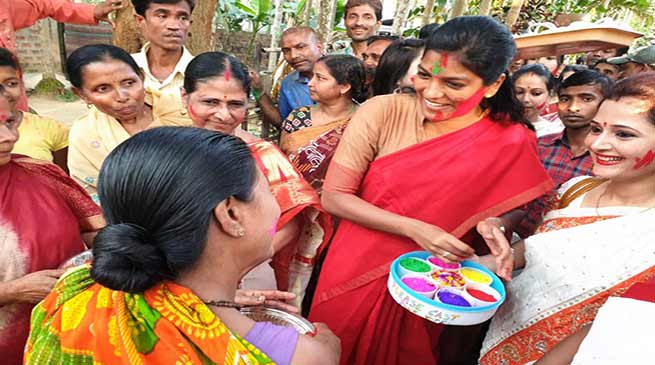
Holi colours at the polling booth. Source: NorthEast India24.com
Keerthi cleverly used stereotyping to which the women could relate. For example she made married women voters feel special by giving them conch shell bangles and playing Holi with them. They were also given sanitary pads and taught about menstrual hygiene. This appears to have worked. The women bonded with her and turned up in large numbers to vote. But will they continue to do so after Keerthi leaves and the post poll disillusionment sets in?
https://www.time8.in/bangles-jaapi-sanitary-pads-for-women-voters-in-hailakandi/
https://insidene.com/2019/04/20/women-voters-far-outnumber-men-in-hailakandi-district-of-assam/
The Hailakandi experience has demonstrated the right type of stereotyping can work because it is recognisable. But is it acceptable? By wooing women voters with these tactics are we not, in a way, actually belittling, trivialising and disempowering them?



